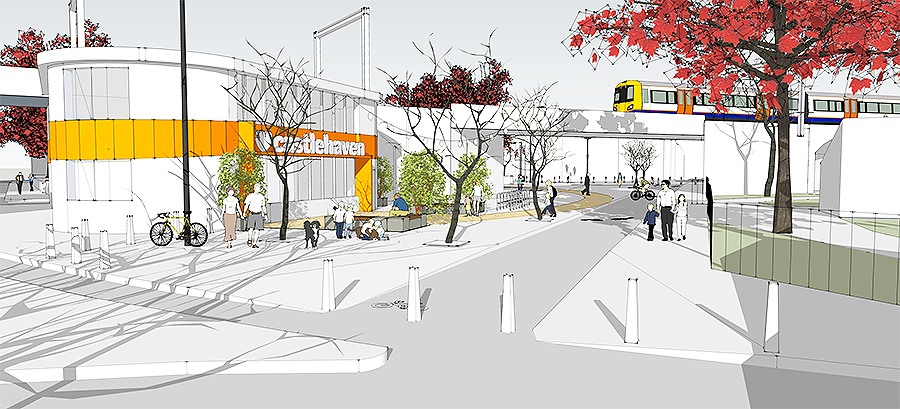Daniel Leon, Founder and Director of leading practice Square Feet Architects, reflects on how civic architecture can be a force for good in divisive times.
Square Feet Architects
Architecture and community have always been intertwined. Throughout history, buildings have served to reinforce and disrupt societal mores, from the status-symbol villas of Ancient Rome to the industrialised spirit of 20th-century Bauhaus.
Identity and ideology, function and faith – all of these concepts are manifest in our built environment; and the architectural styles that we choose to pursue can determine how successful we are in realising these cultural, communal goals.
Our contemporary landscape is no different. The past few years have been fractious ones for British communities, with socio-political events, such as Brexit and the COVID-19 pandemic, marrying with the ongoing challenge of the UK’s housing crisis. On the one hand, Britain is in desperate need of more buildings – with 300,000 new homes required each year to match population growth; yet at the same time, fast-paced construction on such a large scale risks neglecting the needs of the people destined to live in these new neighbourhoods.
In the Government’s recently-introduced long-term housing plan, Housing Secretary Michael Gove established one of the 10 principles for British planning moving forward: that communities should take back control of their future. The question for Gove, the Government and property developers now, is how they can use architecture to achieve this ambition.
While Britain’s communities are developing, this change doesn’t need to be for the worse. At a time of uncertainty and evolution, architecture can offer a uniting force to bring communities together and create inspirational spaces for us to live. Key to doing so is the construction of buildings that not only function but flourish as centres for community life. By drawing people together in spaces that sustain – rather than hinder – the cogs of a community, architecture can help to inspire collaboration, support and respect in neighbourhoods.
A well-thought-out building has the power to consolidate a locality otherwise divided by age, culture or even just the absence of any unifying roots. Architecture can open an individual’s eyes to common goals and demonstrate similarities where, previously, people have seen only differences. More than that, buildings offer vital settings for communities to undertake the activities and occupations that bring them together. The importance of commercial properties, healthcare facilities and educational centres is undoubtable; yet we should be wary of underestimating the value of other spaces such as community hubs, sports halls and arts venues.
Over the past few years, for example, Square Feet has been working to develop a community haven at a site in Camden Town. By combining recreational facilities, such as a football pitch and horticultural hub, with much-needed services, such as a nursery school, the centre offers residents a focal point to help them realise a sense of community.
Don’t overlook how it looks
We should never underestimate the importance of appearance in architecture. At a time of high housing demand and low affordability, the term ‘aesthetics’ has become something of a dirty word; yet we must remind ourselves – people deserve not only a place to live, but a beautiful place to live. While we build for need, we cannot afford to lose sight of this simple truth: that the atmosphere of a neighbourhood has a real and significant effect on its residents, and that affordability should not come at the expense of community.
Beyond giving locals a place to come together, architecture can instil in people a sense of identity and pride in their neighbourhood. Where buildings are run down, poorly constructed or characterless, communities naturally begin to feel forgotten. James Wilson and George Kelling’s 1982 theory of the broken window states as much, suggesting that once a single breakage or sign of disrepair appears in a neighbourhood, inhibitions against anti-social behaviour begin to break down as vandalism and crime become the norm.
Policing has long since embraced this concept to tackle petty crime; yet why should we ignore its relevance when it comes to the deterioration and dilapidation of buildings? When the architecture of a community begins to decline, it sets in motion a pattern of decay that can impact the very essence of the area.
On the other hand, beautiful buildings can help to construct a sense of belonging and self-esteem for local residents. As settlements across Britain spring up and evolve over the coming years, we find ourselves in a pivotal position to shape our communities of the future. Through well-designed architecture, with real people in mind, we can help to ensure that this shape is a beautiful one.










